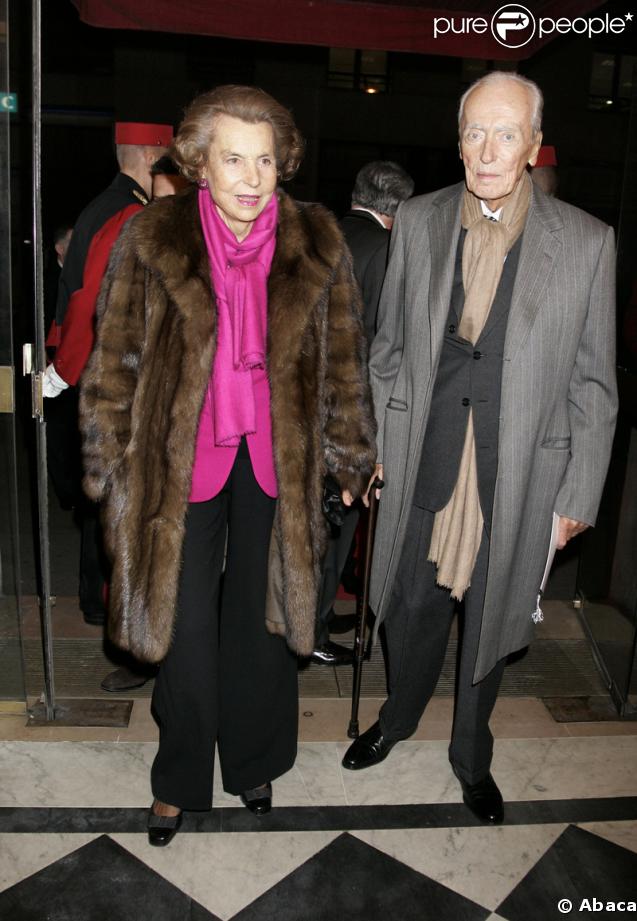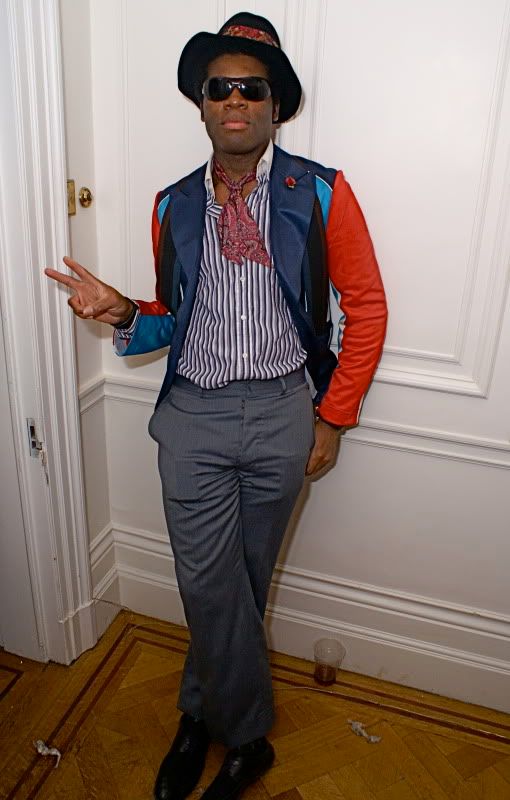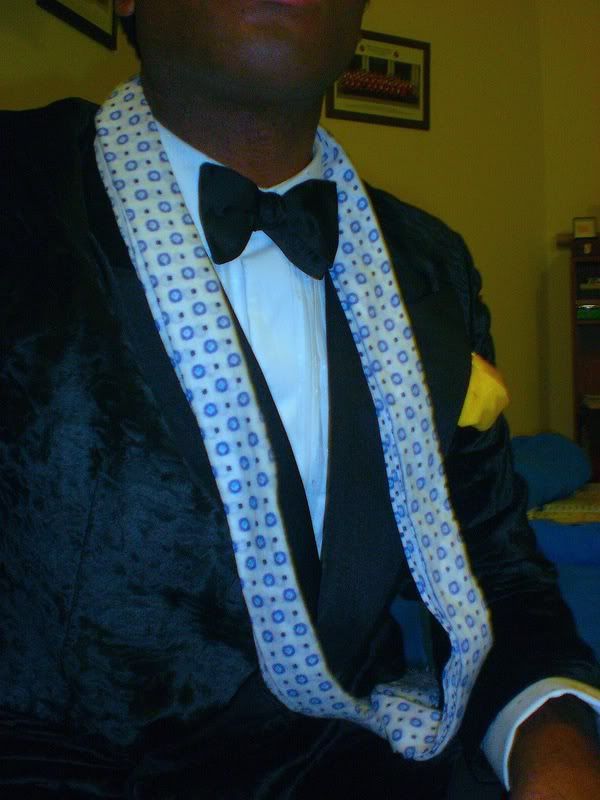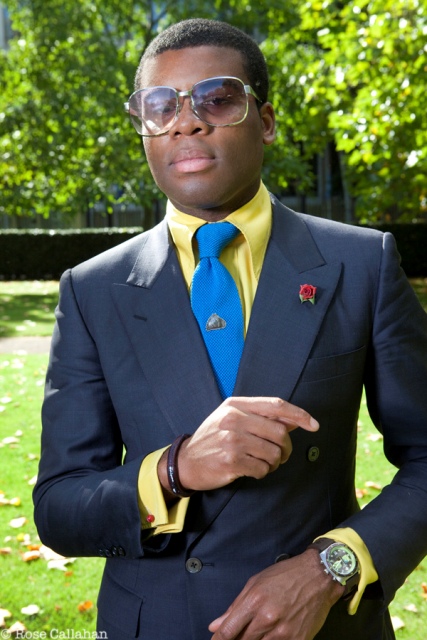As well as being the perfect Sunday afternoon motion picture delight if one's in the mood for song, dance and gentility, genre classic Easter Parade is pure escapism, firing-on-all-cylinders showbiz creativity and catnip for satorial details fiends
In my favourite sequence (with all due respect to 'Steppin' Out With My Baby' and 'We're Just a Couple of Swells'), Fred Astaire goes 'Drum Crazy' and exhibits the charm, aplomb, fleetfooted steps and stylistic nous that had the makers entice him out of retirement when his colleague, fellow icon and friend, Gene Kelly, was forced to bow out. Nearing 50 at the time, he does not approach his routine with the blink-and-miss rapidfire tapping of his younger days, but all of his hallmarks are present and correct - the warmth mixed with goofy, curious humour, his almost peerless agility and his command of body, audience and stage. Just look at his exit - total and intuitive awareness of his environment in full display, he performs a variety of cane tricks, finishing with his trademark spinning catch and exits with a wave and a smile in bounding, mercurial twirls
Cheating a child out of an Easter Bunny never looked so admirable
In my favourite sequence (with all due respect to 'Steppin' Out With My Baby' and 'We're Just a Couple of Swells'), Fred Astaire goes 'Drum Crazy' and exhibits the charm, aplomb, fleetfooted steps and stylistic nous that had the makers entice him out of retirement when his colleague, fellow icon and friend, Gene Kelly, was forced to bow out. Nearing 50 at the time, he does not approach his routine with the blink-and-miss rapidfire tapping of his younger days, but all of his hallmarks are present and correct - the warmth mixed with goofy, curious humour, his almost peerless agility and his command of body, audience and stage. Just look at his exit - total and intuitive awareness of his environment in full display, he performs a variety of cane tricks, finishing with his trademark spinning catch and exits with a wave and a smile in bounding, mercurial twirls
Cheating a child out of an Easter Bunny never looked so admirable
I also greatly appreciate the ease in which he performs in tailoring. The film is set in 1912 and was made in 1948; educated guesses aside, I have no idea who made Astaire's suit nor whether its Edwardianisms were more appropriate for the earlier or the later date but I'll be damned if the majority of the ensemble doesn't hold up today (I still can't forecast a spats return)
Nor do I feel uniquely qualified to expound on the peerlessness of his looks - when there are not one but two excellent extollings at Dandyism and an essential tome (and a Sartorialist guest post pitting the dandy dancer against Cary Grant) by G. Bruce Boyer, there's no place for me in the running. But this walking, singing Leyendecker illustration-ensemble is one of the defining images of Astaire in my mind - simple, harmonious colours, the derby/bowler sitting nonchalantly on his head - a continent and ease of use away from the stereotype it became in the City of London - and a precisely tailored two piece that matches his range of movement so well, the notion of a suit as a second skin is wholly fulfilled. Everything that people miss when trying to bring a suit to life is here
Working primarily with light accents, as dictated by the springtime setting, the hue of the two-piece's grey finds a natural companion in the white waistcoat, which, in turn, is complemented by the spats and even the pearl tie pin. The pink shirt adds a jaunty air; the black necktie works with the shoes and bowler to maintain balance through contrast. The blues that shade the other accessories are perfect. Befitting his successful Broadway star character - hardly a world away from Astaire himself - this is a somewhat patrician, but nevertheless relaxed and creative man, not a businessman. Everything is natural; everything simply works
Nor do I feel uniquely qualified to expound on the peerlessness of his looks - when there are not one but two excellent extollings at Dandyism and an essential tome (and a Sartorialist guest post pitting the dandy dancer against Cary Grant) by G. Bruce Boyer, there's no place for me in the running. But this walking, singing Leyendecker illustration-ensemble is one of the defining images of Astaire in my mind - simple, harmonious colours, the derby/bowler sitting nonchalantly on his head - a continent and ease of use away from the stereotype it became in the City of London - and a precisely tailored two piece that matches his range of movement so well, the notion of a suit as a second skin is wholly fulfilled. Everything that people miss when trying to bring a suit to life is here
Working primarily with light accents, as dictated by the springtime setting, the hue of the two-piece's grey finds a natural companion in the white waistcoat, which, in turn, is complemented by the spats and even the pearl tie pin. The pink shirt adds a jaunty air; the black necktie works with the shoes and bowler to maintain balance through contrast. The blues that shade the other accessories are perfect. Befitting his successful Broadway star character - hardly a world away from Astaire himself - this is a somewhat patrician, but nevertheless relaxed and creative man, not a businessman. Everything is natural; everything simply works
'Drum Crazy', the song? It was written by legendary composer Irving Berlin, which alone speaks for itself, but it boasts qualities not mixed together often enough - danceability, hummability, quotability. Oh, and a relentlessly playful sensibility, so refined that it works in all sorts of drum licks and drum kits with the randomness of a jam session yet never shortchanges the other instruments in play. Even the xylophone. And when it almost arbitrarily becomes a marching band stomp, it nevertheless feels right, because if there's anything that should be freewheeling, it's Fred Astaire in full flight












































